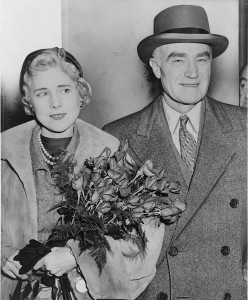An outline of the idea behind Time magazine, which struggles for relevance in the endless news cycle of the Internet age, from “Untimely,” Jill Lepore’s smart 2010 New Yorker article about the feud between glossy Goliaths Henry Luce and Harold Ross:
“Time is an artifact of the Age of Efficiency. Americans, Luce and Hadden believed, were too busy to read the newspaper. The New York Times was ‘unreadable,’ too dense, too dull. Time would be everything, abridged: a week’s worth of news in twenty-odd pages that could be read in an hour. An early bid for subscribers read ‘Take TIME: It’s Brief.’ Each issue was to contain about a hundred articles, none more than four hundred words long. Luce and Hadden put together dummy issues by cutting sentences out of seven days’ worth of newspapers and pasting them onto pages. At first, Time was a kind of assembly-line news, manufactured in a Taylorized shop. But they wanted it to be more than a “digest” (the word has something alimentary in common with what’s now called a “feed”). They sorted the news into categories—National Affairs, Foreign Affairs, The Arts, Sport—which, amazingly, hadn’t been done before, or not nearly as crisply. ‘The one great thing was simplification,” Luce said. “Simplification by organization, simplification by condensation, and also simplification by just being damn well simple.’ The Simplified Spelling Board, endorsed by Theodore Roosevelt, had excised the extra ‘e’ from ‘abridgement.’ Turning the Times into Time saved a letter right there. No wasted letters, no wasted thought. As Luce and Hadden explained in the magazine’s prospectus, ‘TIME is interested—not in how much it includes between its covers—but in HOW MUCH IT GETS OFF ITS PAGES INTO THE MINDS OF ITS READERS.’” (Thanks Longform.)
Tags: Harold Ross, Henry Luce, Jill Lepore

